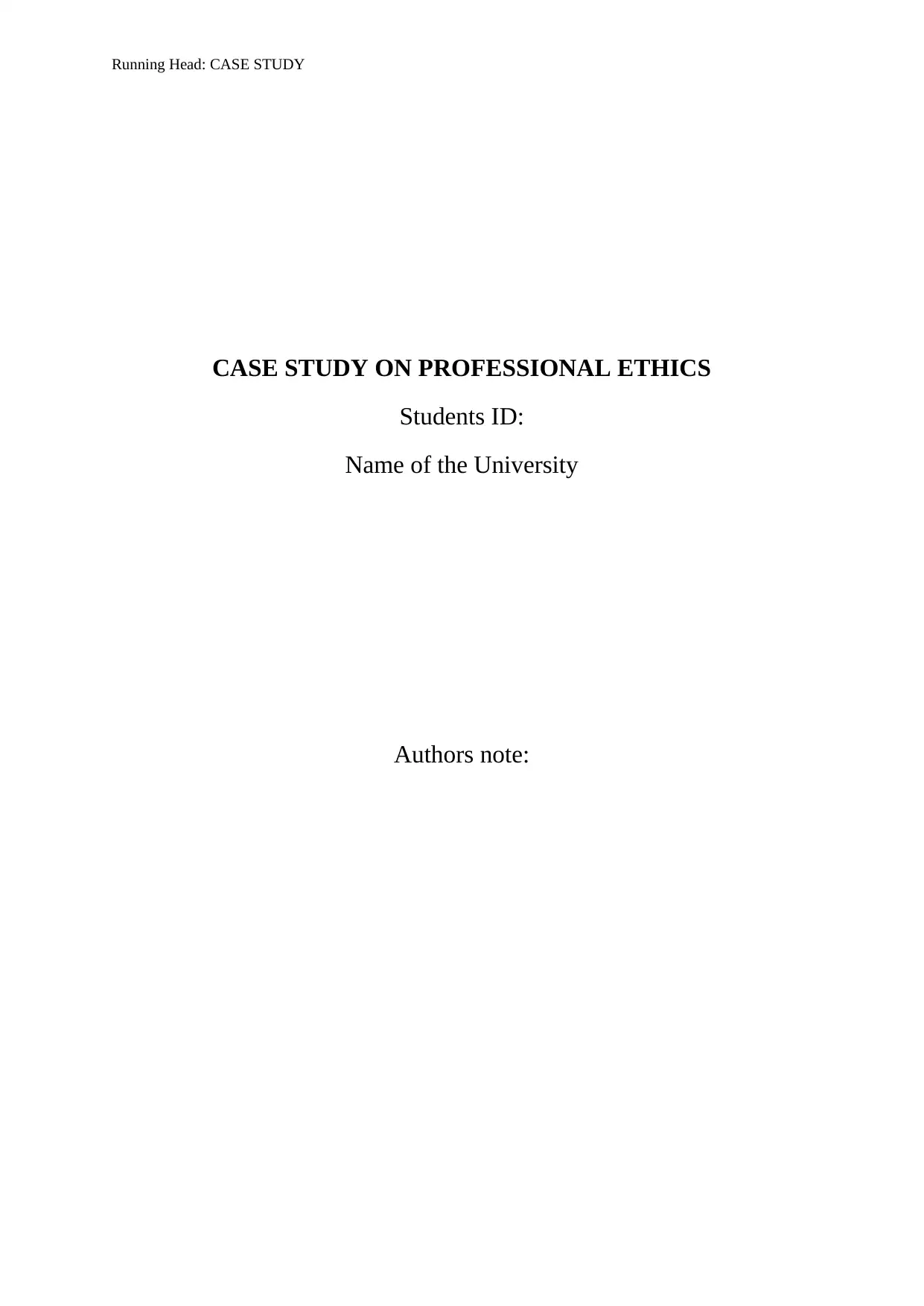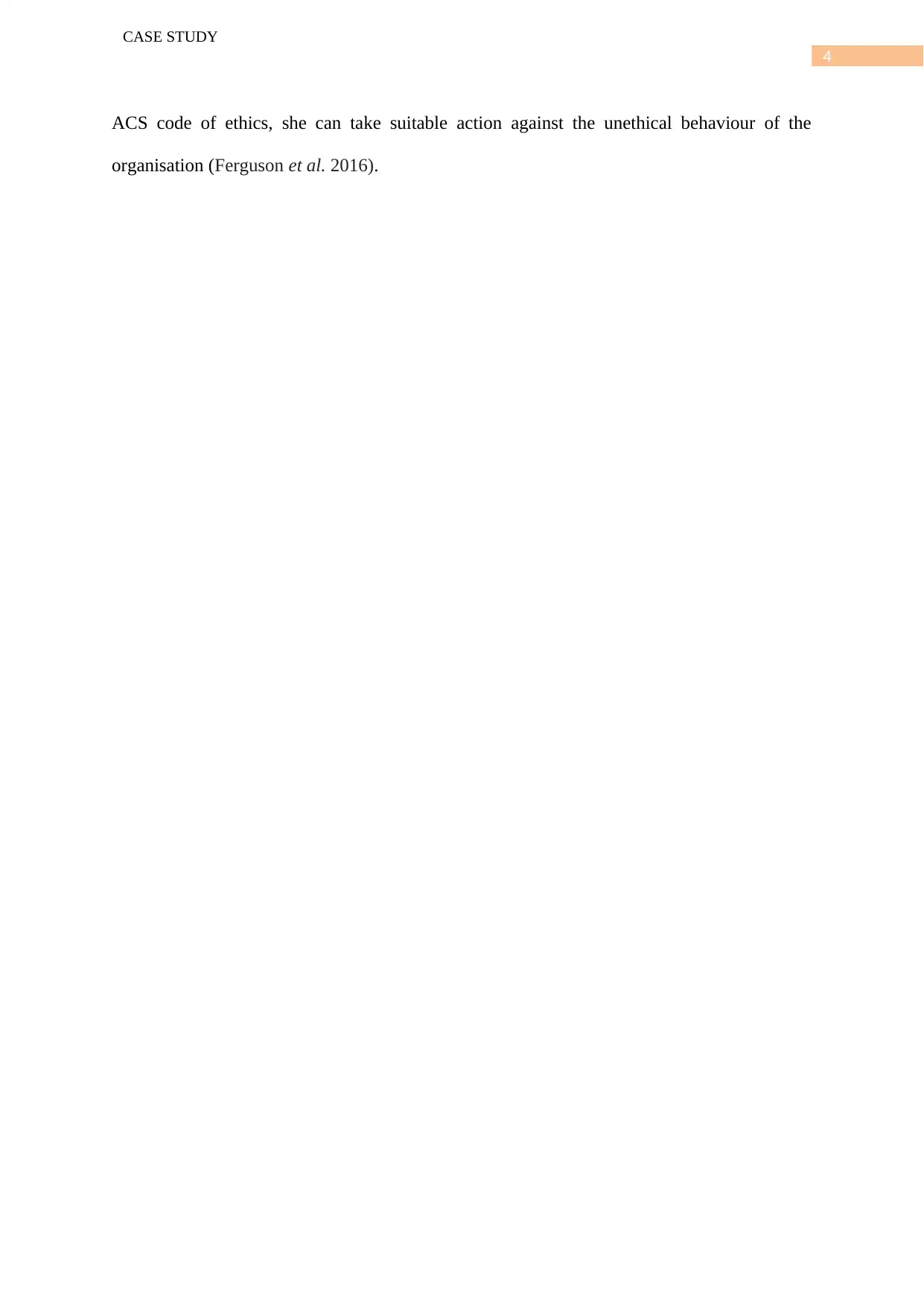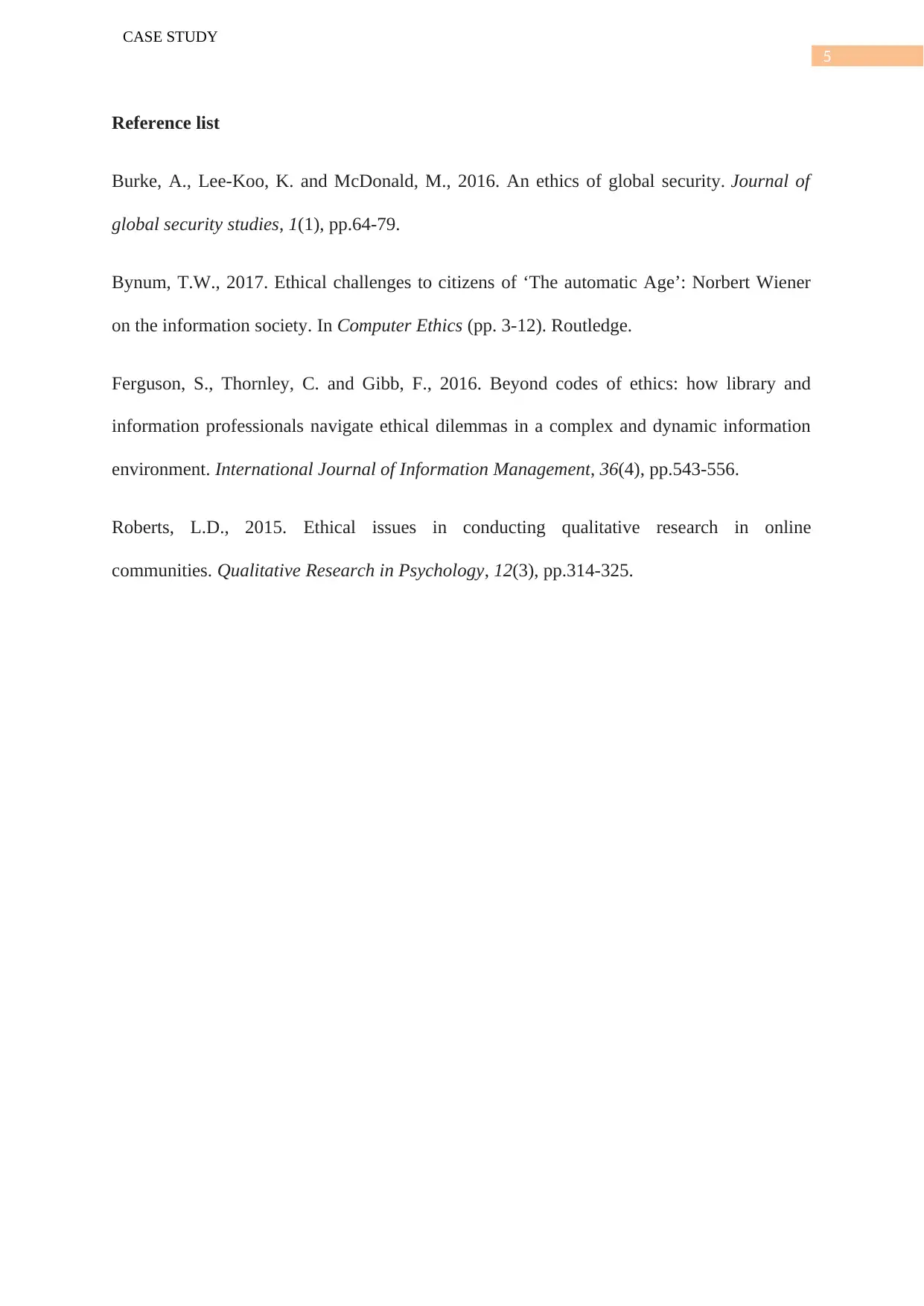Professional Ethics: Case Study Analysis in Professional Environments
VerifiedAdded on 2023/06/08
|5
|795
|262
Case Study
AI Summary
This case study delves into an ethical dilemma faced by Christina, a software manager, who discovers minor bugs in accounting software but is instructed to release it without fixing them. The analysis employs Chris Macdonald's methodology to navigate the conflict between personal prejudices and professional ethics, emphasizing the importance of identifying moral decisions, stakeholders, shared values, and balancing benefits with potential harm. It references the ACS Code of Ethics, particularly concerning public interest and honesty, suggesting Christina consider legal action against the organization for violating ethical standards. The study highlights the responsibility of professionals to uphold ethical conduct and protect the public interest, aligning with the ACS code's principles. Desklib provides access to similar case studies and solved assignments for students.
1 out of 5












![[object Object]](/_next/static/media/star-bottom.7253800d.svg)